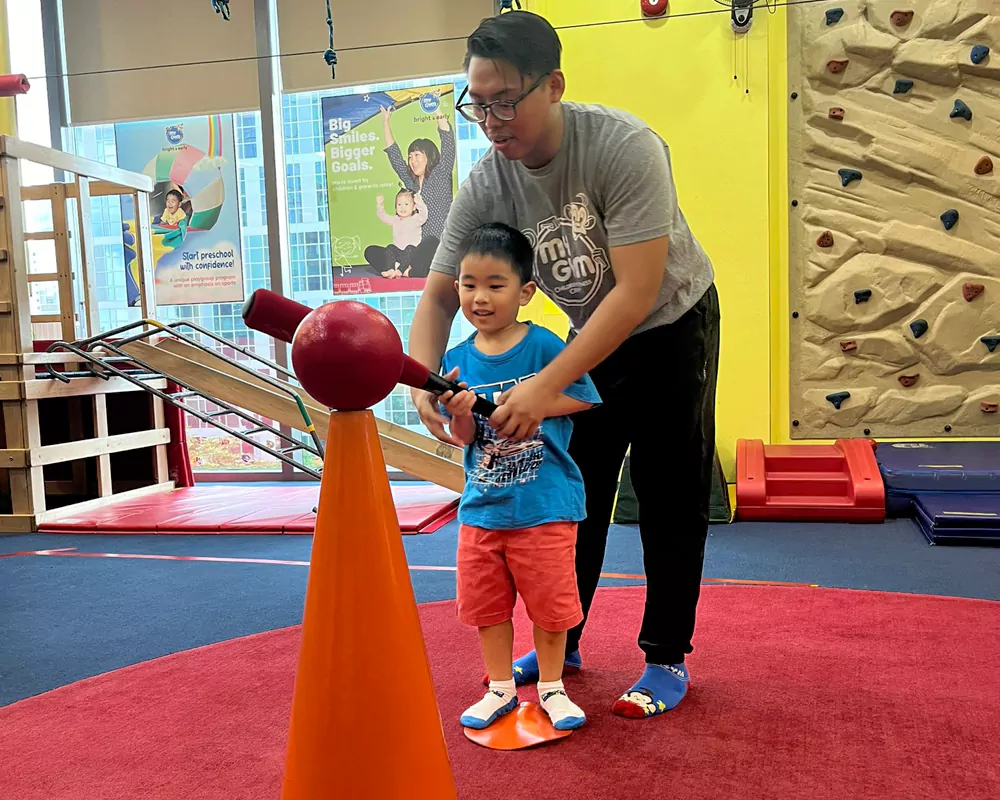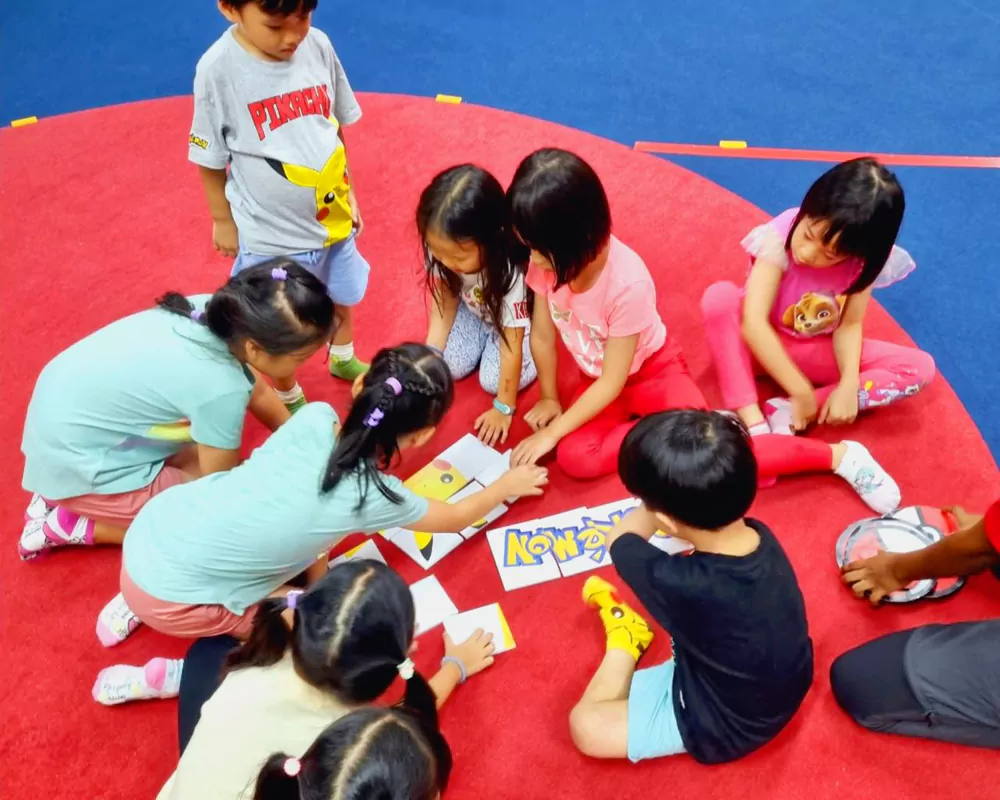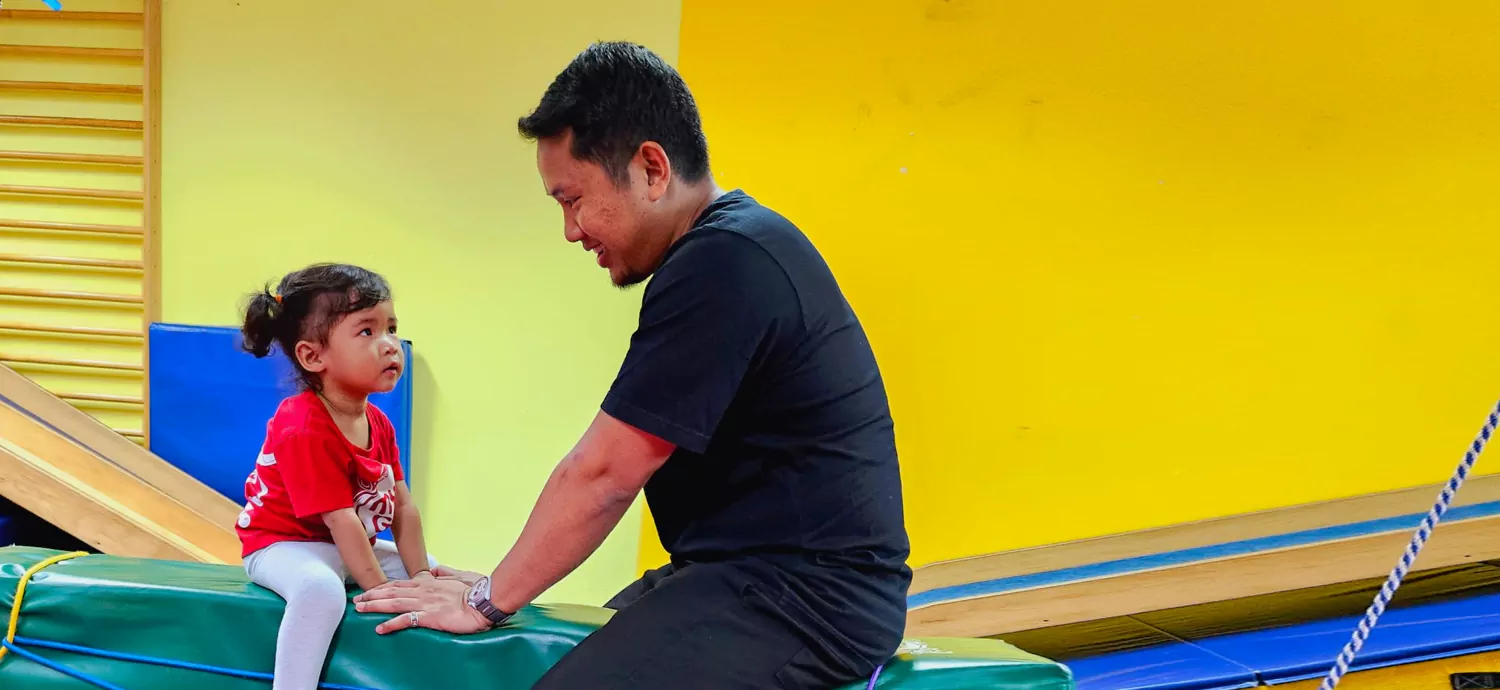The greatest glory in living lies not in never falling, but in rising every time we fall.
– Ralph Waldo Emerson
Most of the time, childhood is idealized as a carefree time. In reality, it is not all that rosy simply because being a young child is no protection against the emotional hurts, challenges, and traumas a child may have to face regularly. In addition to dealing with problems, other uncertainties that are part of growing up in a complex world, make childhood not all that great or carefree.
Remember, every generation has had its unique challenges, but today more than ever before, the demands, anxieties, and pressures faced by young children are many and present an extraordinary challenge to healthy development, growth and well-being. Children require hand-holding and parental support all of the time. [Source]
Resilience is not a genetic trait. It is derived from the ways children learn to think and act when faced with obstacles large and small. When parents help their children cultivate an approach to life that views obstacles as a critical part of success, they take the first step towards fostering resilience in children.Resilience can be taught, internalized and applied whenever stressful events crop up, enabling your child to overcome and rebound following extreme events and challenges. Far from any singular and specific trait, resilience embodies a dynamic interplay of skills and qualities, adapting and evolving in response to the challenges of life. Resilience is a major component in building emotional intelligence in your child.
As the minds of young children are more open, it is easier for them to absorb new skills and strategies. This is why it is critical to start equipping them with child behaviour management techniques early in life. The earlier you initiate the process the better. By doing so, you help reduce the potential negative impact of the stressful environment your child may be exposed to. In other words, you will empower your child to navigate life’s challenges with confidence and strength. Learn more: building child confidence
What is resilience?

You might not be able to control everything that happens, but you can control how you and your child react to situations. This insight is empowering in itself as there are lots of things you can do to reduce risks and ensure that your child grows up healthy and strong. Resilience can be learned and improved. So, if you or your child don’t feel very resilient right now, don’t worry! You can foster resilience in children, and start from the time they can make attempts to stand on their own and take the first step.
Building resilience is a unique and personal journey for each child. Think of it as the ability to bounce back from tough times by adapting and learning. Remember, what works for one child might not work for another, so it’s essential to be flexible in your approach.
This is one of the many reasons why it’s important to keep track of to understand your child’s unique needs and temperament right from the start. It will put you in a better position to guide her effectively on her journey to become more resilient.
Resilience is a critical skill that allows children to adapt and cope with challenges and stress as well as not be afraid of new experiences. In essence, resilience is the ability to manage stress, and trauma, and overcome setbacks.
How to spot low resiliency in children

Resilience is not a trait we are born with, it is also not a steady state of being. It fluctuates erratically depending on life situations at any point in time. Resilience can also erode slowly or it can drop quickly, especially after children experience a significant emotional event or go through a particularly stressful period.
Not all children, however, exhibit the same characteristics. This is why knowing the current state of resilience in a child can help determine when to spend that ‘extra time’ and involve their child in resilience-enhancing activities. So stay alert and keep an eye out for some of the common characteristics children exhibit when their resilience levels drop to a low level:
Short tempered: Low resilience can be quickly spotted when you notice a child losing her temper even when she is least provoked. More often than not, a child is in a combative mood and is quick to pick up a fight about an issue with you or a sibling. Instead of peace and happiness prevailing in a home, there is conflict everywhere.
Constantly falling ill: It is among the most frustrating characteristics of low resilience in a child. Since the immune systems are depressed when resilience is low, the body cannot fight off the viruses and bacteria that a child is naturally exposed to. A child seems to catch every bug, frequently complaining of stomach ailments.
Overtly clingy: As resilience drops, a child can either start to isolate herself or become too dependent on a family member. Unfortunately, by isolating herself, she cuts off an important way to enhance her resilience which is to build a support network.
Becoming moody: As resilience levels fall, there can be a change in a body’s hormones that triggers mood swings. A child can find it harder to control her emotions. Experience extreme highs and lows frequently.
Overreaction: When a favourite toy is snatched away from their hands, most children are slightly annoyed. However, a child with low resilience may overreact and even throw a tantrum. She struggles to cope with the anxiety of losing her toy and is unable to deal with the spike in stress.
Sleeplessness: Trouble sleeping is extremely common among young children with low resilience. Many of first-time parents focus on how to help their child sleep better without realizing that they only need to spend more time involving the child in resilience-enhancing activities. When resilience is high, everyone’s sleep is great.
Memory loss: Low resilience impacts the capacity to remember. Learning levels drop as it becomes impossible for a child to recall what she may have learned. But as soon as resilience improves, so will your child’s memory.
In older children, the most troubling characteristic of low resilience is the lack of hope. This can sometimes lead to depression. This will make it harder to plan and problem-solve as it can rapidly spin out of control.
While we may not be able to remove all the challenges children encounter, you as a parent can pass on the skills you have learnt to help your child cope with stress and adversity. Making her realize that whenever she feels down and out, you are always there to help her feel better.
7 ways to build resilience in children

Never give up:
Make “never give up” a rallying call to motivate your child in her efforts for personal growth. For instance, when your child wants to learn karate and encounters difficulties, it’s easy for her to feel discouraged and tempted to give up. As a parent, it will be important for you to stand by her. Your patience and support will encourage your child to continue and overcome the challenge.
If you allow your child to give up at the first sign of difficulty, she not only misses out on the opportunity to improve her skills but also allow her to deprive herself of experiencing the immense satisfaction that comes from overcoming obstacles.
By sticking with karate or any other activity, despite the initial struggles, children learn the value of persistence and dedication. They develop the resilience needed to tackle challenges head-on.
Know for a fact that resilience will play a critical role in achieving success in any domain — right from sustaining personal relationships to fulfilling career aspirations. Just like learning karate, building relationships too can be challenging, requiring patience, understanding, and compromise.
Children need to learn that disagreements and conflicts are a natural part of any relationship and should not be a reason to give up hastily. By persevering through difficult times, children learn valuable lessons about communication, empathy, and resilience, which are essential for fostering healthy relationships when they grow into adulthood.
Similarly, pursuits such as finding a job, getting into university, or passing a driving test, all require resilience and perseverance. Rejection and setbacks are inevitable, but It’s your child’s ability to bounce back from challenges that ultimately leads her to success.
By encouraging children to embrace challenges and learn from setbacks, parents empower them to develop confidence in their abilities and pursue their passions with determination and resilience. Ultimately, instilling the value of “never giving up” in children lays the foundation for a lifetime of resilience, perseverance, and personal growth.
It is OK to fail:
Perfectionism is often driven by the fear of failure and can become a detrimental mindset for young children to have. Instead, embracing the concept that “it is OK to fail” is crucial for the healthy development of young minds.
Every child encounters setbacks; it’s an inevitable part of life. It could be failing to secure the top spot in a competition or receiving not-so-great grades on an assignment. Parents needn’t be protective or shield their children from facing such experiences. Instead, these events should be seen as opportunities for growth.
When failures turn into something that is to be feared and ashamed of, it can hinder a child’s emotional well-being and stunt their personal development. Setbacks are not indicative of your child’s worth or capabilities.
Therefore, it’s important to normalize failure as a natural part of the learning process. The fact is only through failure can children learn what resilience, perseverance, and problem-solving skills truly are
— invaluable traits that help in navigating life’s challenges.
Experiencing both failure and success in equal measure is essential for fostering emotional intelligence and empathy in children. By learning to handle failure with grace and humility, children develop a greater sense of empathy towards others who may be experiencing similar challenges. This will help make your child into a better friend, someone who shows kindness and empathy for others and builds strong relationships.
Don’t run away from difficult emotions:
Encourage children to confront difficult emotions rather than avoid them. This approach to building resilience involves allowing children to experience challenging situations that evoke tough emotions, fostering a sense of capability and empowerment in handling adversity.
When children experience failure, it’s essential to create a supportive environment where they can openly express their feelings without shame. Acknowledge and label their emotions, whether it’s sadness, anger, frustration, or disappointment, to validate their experiences and promote emotional understanding.
Guide children through the process of identifying and understanding their emotions by labelling them and allowing them to fully experience and express these feelings. By providing nurturing experiences and offering comfort, such as making a warm drink and spending quality time together, you demonstrate empathy and reinforce the idea that it’s normal to experience a range of emotions.
By acknowledging and empathizing with your child’s emotions, you create a safe and supportive space for them to process their feelings. Offering comforting gestures and actively listening to their concerns strengthens the parent-child bond and encourages open communication about emotions.
Maintaining an open and positive relationship with your child cultivates a sense of trust and confidence in their ability to navigate difficult emotions. By providing consistent support and guidance, you help your child develop the resilience needed to confront and overcome future challenges with courage.
Expose to a wider range of experiences:
Recognize that resilience isn’t confined to just academic or athletic pursuits. Encourage your child to engage in a diverse range of activities to foster resilience across various life skills and scenarios.
Exposure to unfamiliar territories offers invaluable opportunities for your child to acquire skills she may not encounter elsewhere. From learning survival skills to mastering DIY projects, these experiences broaden her resilience playbook.
Resilience isn’t a one-size-fits-all concept either. Encourage your child to appreciate the value of resilience in diverse contexts. While bouncing back from a sports defeat is important, so is the satisfaction gained from mastering tasks like preparing a meal over a campfire. It helps a child understand that each experience contributes uniquely to her overall growth.
Empower your child to step out of her comfort zone by taking healthy risks in everyday situations. Whether it’s ordering food in a restaurant independently or initiating a conversation with new peers at the playground, these experiences foster resilience by building confidence and adaptability.
Success in situations involving potential risks serves as a boost to your child’s self-esteem, reinforcing belief in her abilities to overcome challenges. Each triumph, no matter how small, contributes to a growing sense of self-assurance and resilience.
Encourage young children, in particular, to embrace healthy risks as a means to fortify their self-esteem. Each successful encounter with a challenge not only bolsters their confidence but also equips them with the skills and strategies necessary to tackle larger obstacles in the future.
Teach problem-solving skills:
Whether it’s a doll-related conflict, a tough math sum, or negative peer pressure, children of all ages face problems and challenges daily. Instead of giving up or getting frustrated, children who have learned problem-solving skills can manage their emotions, think creatively, and persist until they resolve the issues they face. However, children who haven’t learned problem-solving skills find it difficult to deal with such situations.
Problem-solving these days exceeds finding a solution to a problem. It must have all the key 21st century skills: collaboration with peers, creative use of technologies, critical thinking and clear communication of solutions. Be ready to face and thrive in an increasingly complex and rapidly changing world.
When it comes to teaching children problem-solving skills, it is best to start as early as possible. When you do that you will be empowering your child to not only solve her problems but also prepare her for the time when she goes to school. Problem-solving skills include the ability to analyse information, make informed decisions, and adapt to new situations. Helping children make sense of the world around them and to think for themselves. Learn More: problem-solving skills
By teaching children how to think critically and solve problems, we are also teaching them how to generate new ideas, see connections and patterns, and think outside the box. Apart from this, critical thinking and problem-solving are not just cognitive skills, but also social-emotional skills.
They help children to understand and appreciate different perspectives, to communicate effectively with others, and to collaborate effectively. Through critical thinking, children can learn how to empathise with others, build relationships, and work as part of a larger team.
Nurture a “growth mindset”:
Every human being on the planet has a mindset (a way of thinking that determines behaviours, outlook and mental attitude). More importantly, a mindset is moulded from birth by influencers and life experiences.
Remember, nothing in nature remains static. The more we do something, the more we strengthen the neural networks in the brain, making the skill feel more natural each time. This way, all the areas of your child’s brain can be improved – whether it is motor skills, academic skills or building relationships – every area can be reinforced.
This is how the prefrontal cortex develops — the area of the brain that manages rational thinking and planning. Over time, your child will keep pushing herself to become growth-orientated, eventually turning a “growth mindset” into a default setting.
A “growth Mindset” is an idea developed by psychologist Carol Dweck of Stanford University. According to her, “If parents want to give their child a gift, the best thing they can do is to teach her to love challenges, be intrigued by mistakes, enjoy effort and keep on learning. That way, she will not become a slave to praise. She will have a lifelong way to build and strengthen her confidence.” [Source]
Knowing that her abilities can be developed, and improved opens a world of opportunities for her. Plus the power of knowing that she can keep on improving her mind will have an enormous impact on your child’s mental attitude, self-belief and focus.
Be a role model for your child:
Parents serve as primary role models in their children’s lives, shaping their behaviours and responses to life’s challenges. This also presents an incredible opportunity to instil resilience and optimism in their child’s upbringing.
When faced with setbacks or failures, you have an opportunity to demonstrate the power of a positive response. Rather than surrendering to defeat, showcasing resilience and determination teaches your child invaluable lessons about perseverance and problem-solving.
Tough times are inevitable and you need to create a safe space for your child to express her emotions openly and without judgment. Modelling healthy emotional expression not only validates her feelings but also teaches your child that it’s okay to experience emotions and that these will eventually pass.
Allowing your children to witness your emotional responses fosters trust and strengthens the parent-child bond. By sharing vulnerabilities you are creating a deeper connection based on honesty and authenticity. Showing that you too are human.
When children see their parents navigate difficult situations with empathy and compassion, they learn the importance of understanding and supporting others during times of need. This not only strengthens their emotional intelligence but also cultivates a sense of empathy.
Ultimately, by modelling resilience and emotional intelligence, you empower your children and lay a foundation for lifelong resilience and emotional well-being, equipping them with the tools they need to thrive in an ever-changing world.
How My Gym can help
One effective way to help young children grow up to be resilient and become positive human beings is by involving them in physical activities that aim for all-round development. By motivating and involving children to perform dynamic physical movements individually and in groups, you create a safe setting where children can learn collaboration, focus and listen to instructions.
By interacting with their peers day in and day out, children acquire critical social and communication skills in real-time, enabling them to navigate complex social situations and nurture emotional development to lead healthier lives.
My Gym’s enrichment programs augment the growth of neural networks in the brain and lay a solid foundation for personal, academic and future growth. By involving children in age-appropriate, structured and unstructured activities My Gym builds resilience, and develops listening, thinking and problem-solving skills. Please visit any of My Gym centres to learn more about how it supports “whole-child development”.
Choose a day when you are relatively free and come over with your child in tow. Your child could be an infant (as young as 6 months), a toddler or a preschooler, age is not a bar to learn how your child can become resilient, and pick up skills just by looking and imitating. without missing out on anything!
Please note: My Gym classrooms are thoroughly sanitized every day — the tables, the chairs, the children’s activity stations and everything else the child might touch is made safe and clean. Whenever required, children are encouraged to wear a mask, wash their hands frequently, and practice social distancing as well.



